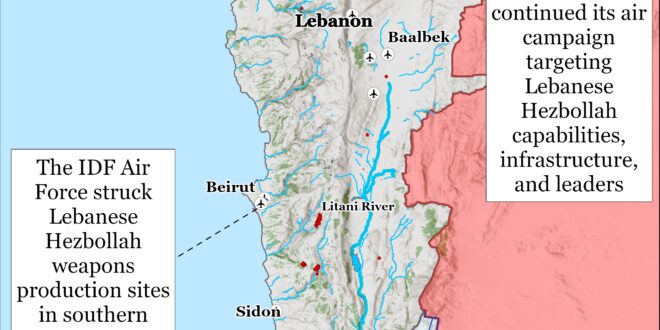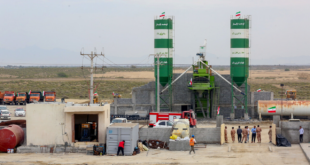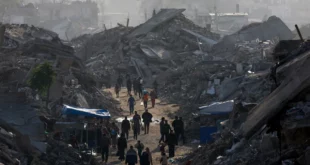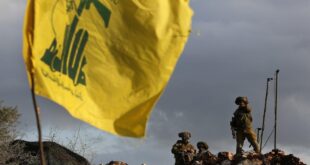The Israel Defense Forces (IDF) inflicted serious damage to the Iranian integrated air defense network during its strikes on Iran on October 25. The IDF struck and disabled air defense command-and-control sites and radars, including at some S-300 sites.[1] The S-300 is Russian-made and the most advanced air defense system that Iran operates. The IDF struck three or four S-300 sites, including one at the Imam Khomeini International Airport near Tehran.[2] Three unspecified Iranian officials told the New York Times that the IDF strikes have caused major alarm among Iranian leaders.[3]
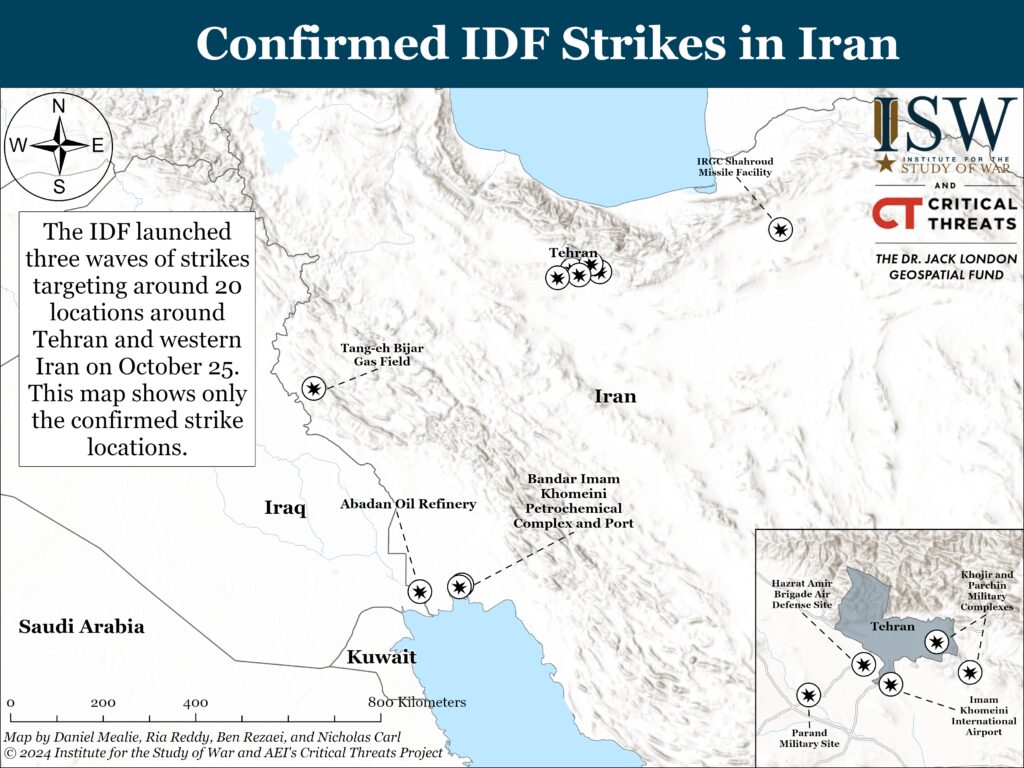
Some of the air defense sites that the IDF struck were protecting critical energy infrastructure in western and southwestern Iran. Western media confirmed that IDF struck air defense sites around the Abadan oil refinery, Bandar Imam Khomeini energy complex and port, and the Tang-eh Bijar gas field.[4] Degrading the air defenses around these sites could leave them more vulnerable to future strikes.
CTP-ISW previously reported on how the IDF strikes could also disrupt the Iranian ability to build missiles and transfer them to partners abroad, such as Russia, Lebanese Hezbollah, and the Houthis. The IDF strikes—in addition to targeting air defense sites—hit drone and missile production facilities across Iran.[5] Commercially available satellite imagery revealed significant damage at the Parchin military complex, for example. The Parchin complex is one the most expansive and secretive Iranian missile production facilities. Some of the targets that the IDF targeted at the missile facilities were sophisticated mixing machines used to make solid fuel for advanced ballistic missiles, such as those that Tehran has used to attack Israel directly.[6] Iran will likely need months or
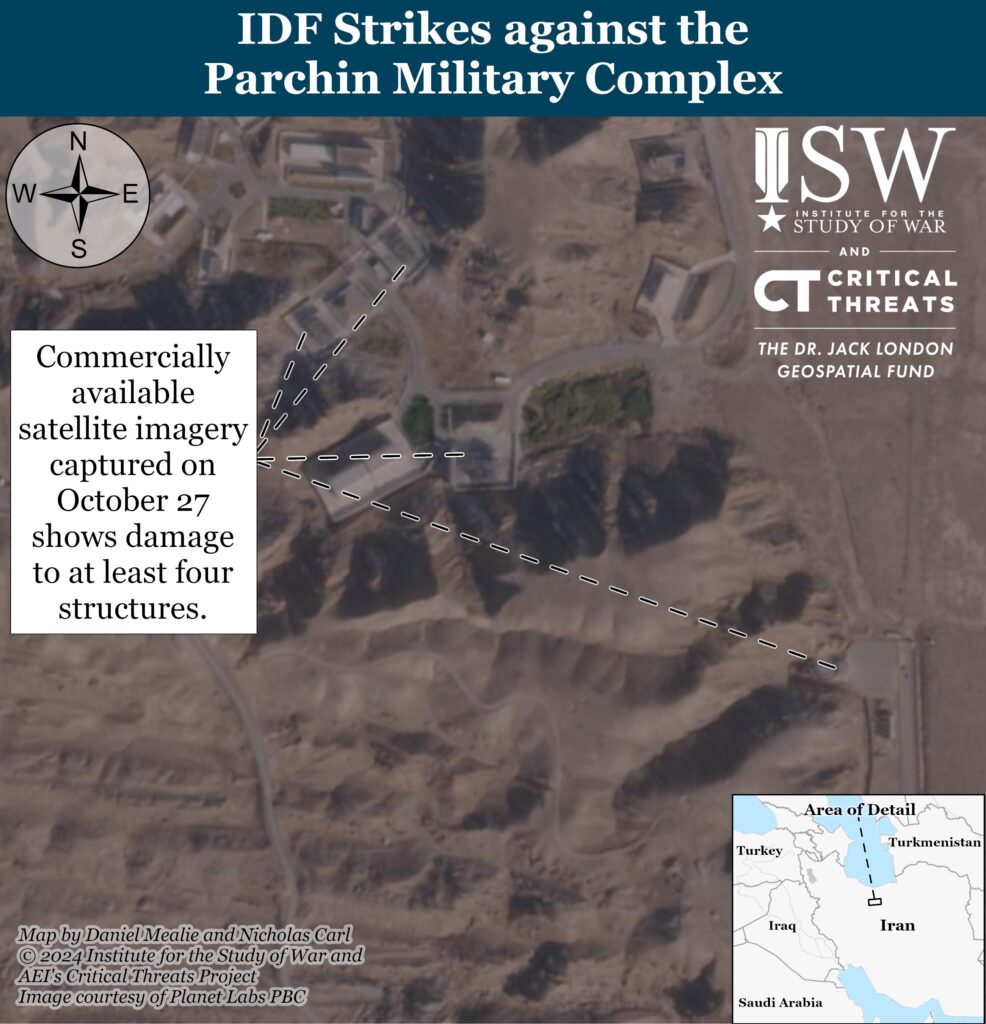
Iranian Supreme Leader Ali Khamenei said that, despite Israeli efforts to “magnify these actions for its own specific agenda”, it would be “misguided” for Iran to overlook the attacks during a speech in Tehran on October 27.[8] Khamenei emphasized that Iranian officials will “assess and precisely apprehend what needs to be done” to show Israel “who the Iranian people are.” The Iranian Foreign Affairs Ministry called on October 26 for an urgent meeting of the UN Security Council.[9] UN Security Council President Pascale Christine Baeriswyl announced that the council will convene on October 28 to discuss the IDF strikes on Iran.[10]
Hamas has rejected a deal with Israel that would grant Hamas leaders safe passage from the Gaza Strip in exchange for the release of Israeli hostages. Hamas’ rejection indicates that the group has not accepted defeat and calculates that it can survive and recover in the Gaza Strip. Mossad Director David Barnea proposed the deal in a recent meeting with Egyptian officials.[11] Senior Hamas official Khalil al Hayya rejected the proposal and reiterated Hamas’ intent to continue fighting for influence in the Gaza Strip.[12] Hamas is exploiting the lack of a post-war plan for the Gaza Strip by lobbying for the establishment of a national unity government with the Palestinian Authority (PA). Hamas likely calculates that it could slowly coopt and control any unity government with the PA and thereby retain a prominent role in post-war governance in the Gaza Strip.
Hamas rejecting the deal that would protect its leaders supports CTP-ISW’s assessment that the death of Yahya Sinwar is unlikely to prompt a shift in Hamas strategy in the war. Sinwar similarly rejected a deal with Israel that would grant him safety in September 2024.[13] CTP-ISW assessed at the time that Sinwar would almost certainly reject the deal due to his deep commitment to fighting and destroying Israel.[14] Hamas will likely continue to engage in ceasefire-hostage negotiations with Israel in order to secure its maximalist demands, such as the IDF withdrawing completely from the Gaza Strip. Hamas officials and international negotiators are currently in Doha for further talks.[15]
Key Takeaways:
Iran: The IDF inflicted serious damage to the Iranian integrated air defense network in its strikes on October 25. This is in addition to the disruption that the IDF may have imposed on the Iranian ability to build missiles.
Gaza Strip: Hamas rejected a deal with Israel that would grant Hamas leaders safe passage from the Gaza Strip in exchange for the release of Israeli hostages. Hamas’ rejection indicates that the group has not accepted defeat and calculates that it can survive and recover from the war.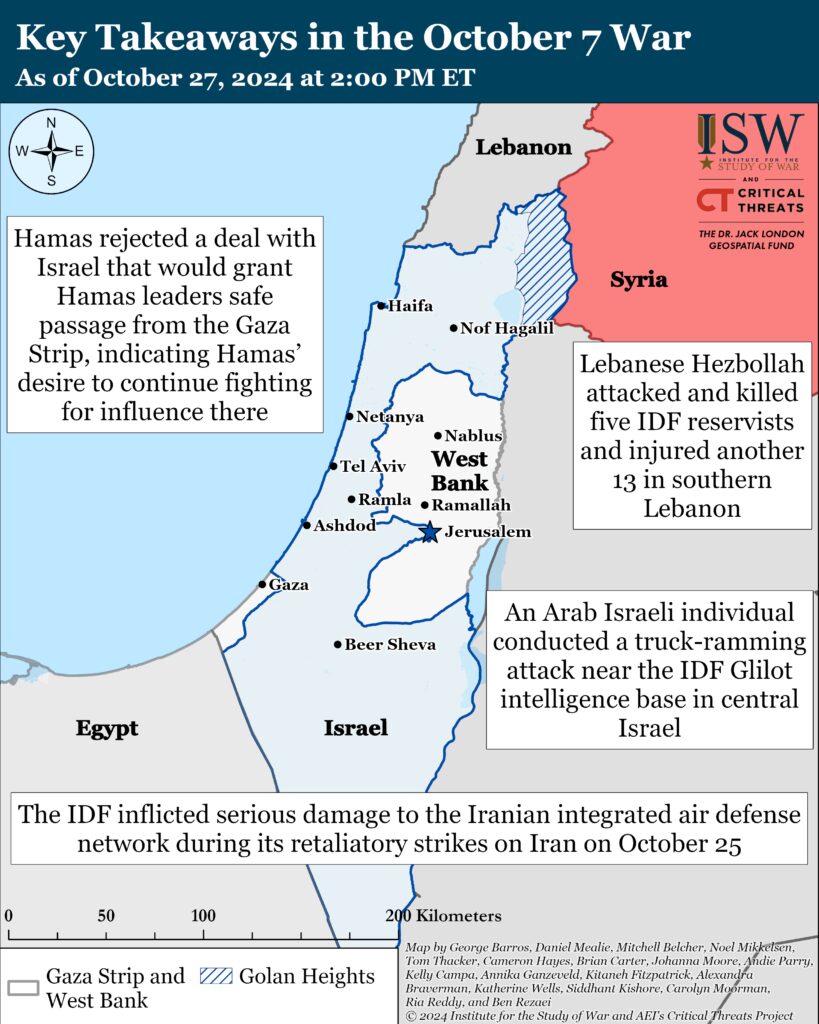
Gaza Strip
Axis of Resistance objectives:
Erode the will of the Israeli political establishment and public to sustain clearing operations in the Gaza Strip
Reestablish Hamas as the governing authority in the Gaza StripThe IDF 162nd Division continued clearing operations around Jabalia in the northern Gaza Strip on October 27. Israeli forces have killed over 40 Palestinian fighters since CTP-ISW’s last data cutoff on October 26.[16] The IDF 84th Brigade (162nd Division) destroyed Palestinian militia infrastructure and found a large quantity of weapons.[17] The Hamas-run Gazan Health Ministry claimed that dozens of civilians were killed or injured in an Israeli airstrike on a residential area in Beit Lahia.[18] The IDF stated that it had targeted Hamas fighters in the area.[19]
The IDF Air Force struck a Hamas command-and-control site in the northern Gaza Strip on October 27.[20] The IDF stated that Hamas fighters used the former Salah al Din school in Gaza City to plan and conduct attacks targeting Israeli forces and into Israeli territory.[21] The IDF added that it took steps to minimize civilian casualties.
Palestinian militias claimed to have conducted three attacks targeting Israeli forces around the Netzarim Corridor since CTP-ISW’s last data cutoff on October 26.[22] The IDF 252nd Division operates around the Netzarim Corridor.[23]
The IDF 252nd Division destroyed Palestinian militia infrastructure and killed Palestinian fighters in close-quarters combat in the central Gaza Strip on October 27.[24] The IDF Air Force struck militia buildings in the area. A Palestinian journalist reported gunfire from areas surrounding Bureij and Nuseirat refugee camps.[25] The National Resistance Brigades mortared Israeli personnel and vehicles southeast of Bureij camp on October 27.[26]
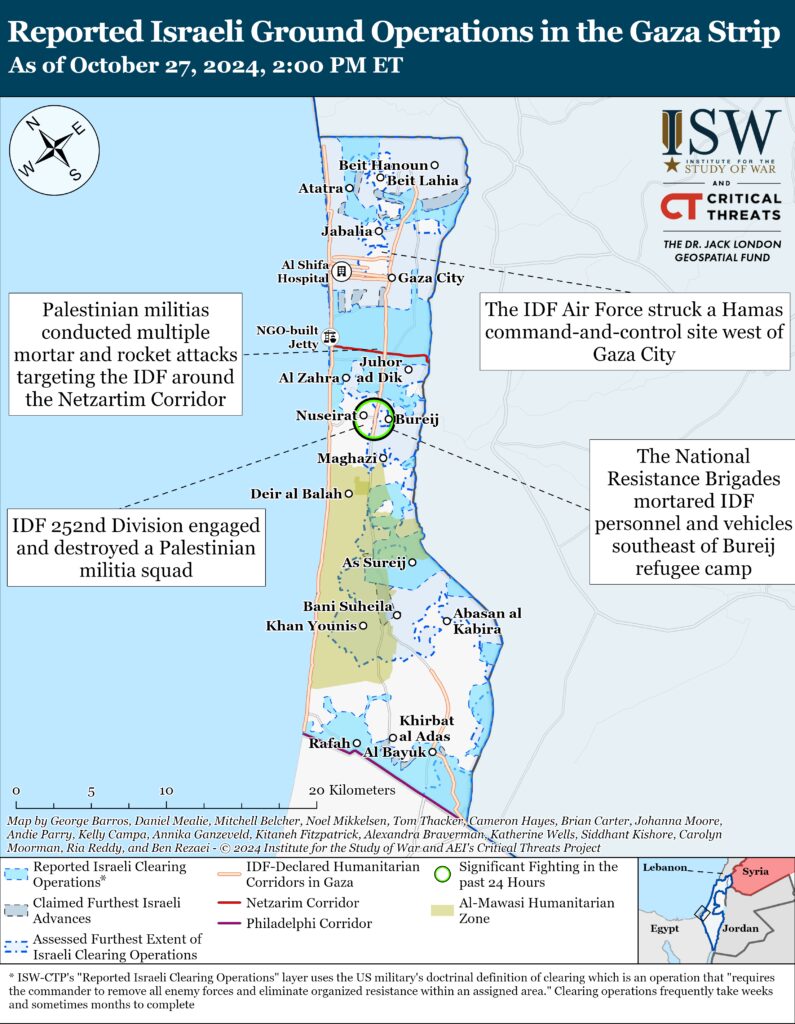
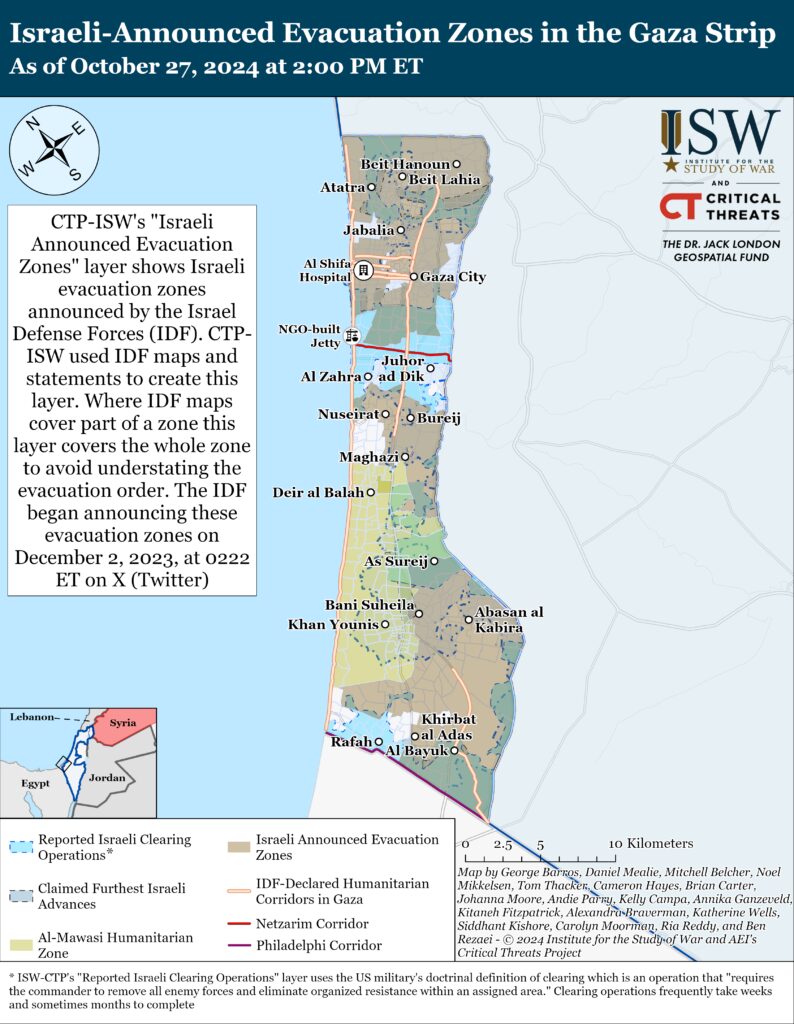
West Bank
Axis of Resistance objectives:
Establish the West Bank as a viable front against IsraelAn Arab Israeli individual conducted a truck-ramming attack near the IDF Glilot intelligence base in central Israel on October 27.[27] The attacker rammed a truck into a group of Israeli civilians at a bus stop at the Glilot junction, killing one Israeli civilian and injuring 37 others.[28] Armed Israeli civilians shot and killed the attacker.[29] An Israeli Army Radio correspondent identified the attacker as an Arab Israeli citizen from Qalansawe—an Arab-majority city in central Israel.[30] Palestinian militias praised the attack, however, no group has taken responsibility at the time of this writing.[31] The IDF Glilot intelligence base houses the IDF Unit 8200, which is a signals collection unit, and the Mossad headquarters.[32] Iran targeted the base in its large-scale ballistic missile attack on Israel on October 1.[33]
A Palestinian individual attempted a car-ramming and stabbing attack targeting Israeli forces in Hizma, Jerusalem Governorate, in the West Bank on October 27.[34] The attacker approached Israeli forces in a vehicle and tried to stab IDF personnel in the area before the IDF shot and killed the attacker.[35] The IDF reported no casualties.
Israeli forces have engaged Palestinian fighters in at least one location in Jenin since CTP-ISW’s last data cutoff on October 26.[36] Palestinian Islamic Jihad (PIJ) detonated improvised explosive devices (IEDs) targeting Israeli forces. The Mujahidin Brigades—Palestinian Mujahidin Movement’s military wing—separately fired small arms at an IDF checkpoint near Bethlehem in the West Bank.[37]
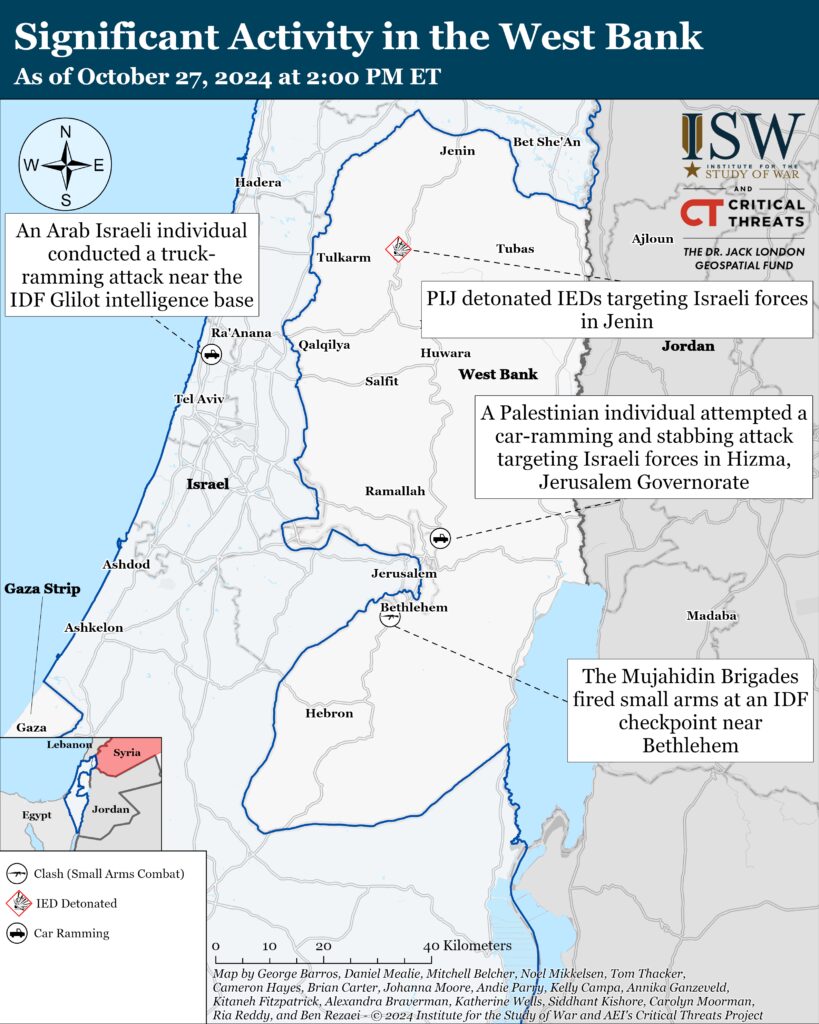
Northern Israel and Lebanon
Axis of Resistance objectives:
Prepare for an expanded and protracted conflict with Israel in the near term
Expel the United States from SyriaThe IDF 98th Division continued clearing operations in southeastern Lebanon. Lebanese Hezbollah fired rockets targeting Israeli forces around Kfar Kila.[38] Local media reported that Israeli forces continued to demolish buildings in Odaisseh, which is adjacent to Kfar Kila.[39]
The IDF 91st Division continued clearing operations in southeastern Lebanon, likely between Blida and Hula. The IDF 226th Brigade (91st Division) has continued operations in southern Lebanon in recent days.[40] The brigade raided a Hezbollah Radwan special operations forces (SOF) “staging area” in a village in southern Lebanon.[41] The forces have directed about 150 strikes targeting Hezbollah infrastructure over the past week.[42]
Hezbollah engaged the IDF 288th Infantry Brigade (91st Division), killing five reservists and injuring another 13 on October 26.[43] Israeli sources reported that three Hezbollah militants also died.[44] An Israeli Army Radio correspondent said that the IDF is investigating the incident.[45] Hezbollah has not explicitly acknowledged the incident at the time of this writing but claimed two attacks targeting Israeli infantry on the outskirts of Hula with an anti-tank guided missile and rocket fire.[46] Hezbollah claimed that it killed and wounded Israeli forces in the anti-tank guided missile attack.[47] The 91st Division is operating around Blida and Hula.[48]
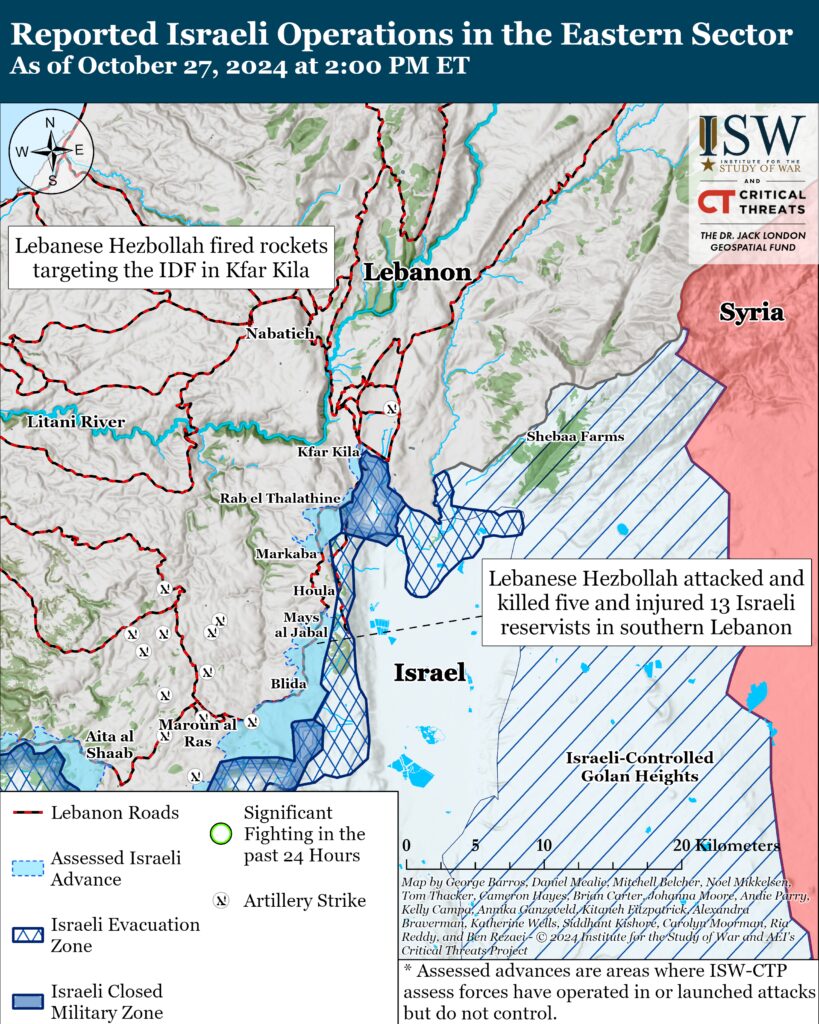
The IDF 36th Division continued operations in southern Lebanon around the Aita al Shaab, Aitaroun, and Ramyeh. Hezbollah conducted at least three waves of indirect fire attacks targeting Israeli forces on the outskirts of Aitaroun.[49] The IDF Air Force killed the Hezbollah commander for Bint Jbeil on October 25 and then killed his deputy on October 26.[50] The October 26 airstrikes also killed the Hezbollah Bint Jbeil artillery commander.[51] The IDF 1st Infantry Brigade (36th Division) has killed dozens of Hezbollah militants over the past week.[52] The 1st Brigade has also seized weapons and destroyed underground Hezbollah infrastructure, including caches buried near the border fence.[53]
The IDF 146th Division continued clearing operations in southwestern Lebanon on October 26. Hezbollah fired rockets targeting Israeli forces in al Dhayra.[54] A Hezbollah-affiliated military correspondent reported small arms clashes and rocket fire targeting Israeli forces in Yarine, the town adjacent to al Dhayra.[55] The IDF 146th Division directed an airstrike targeting Hezbollah militants in a building.[56]
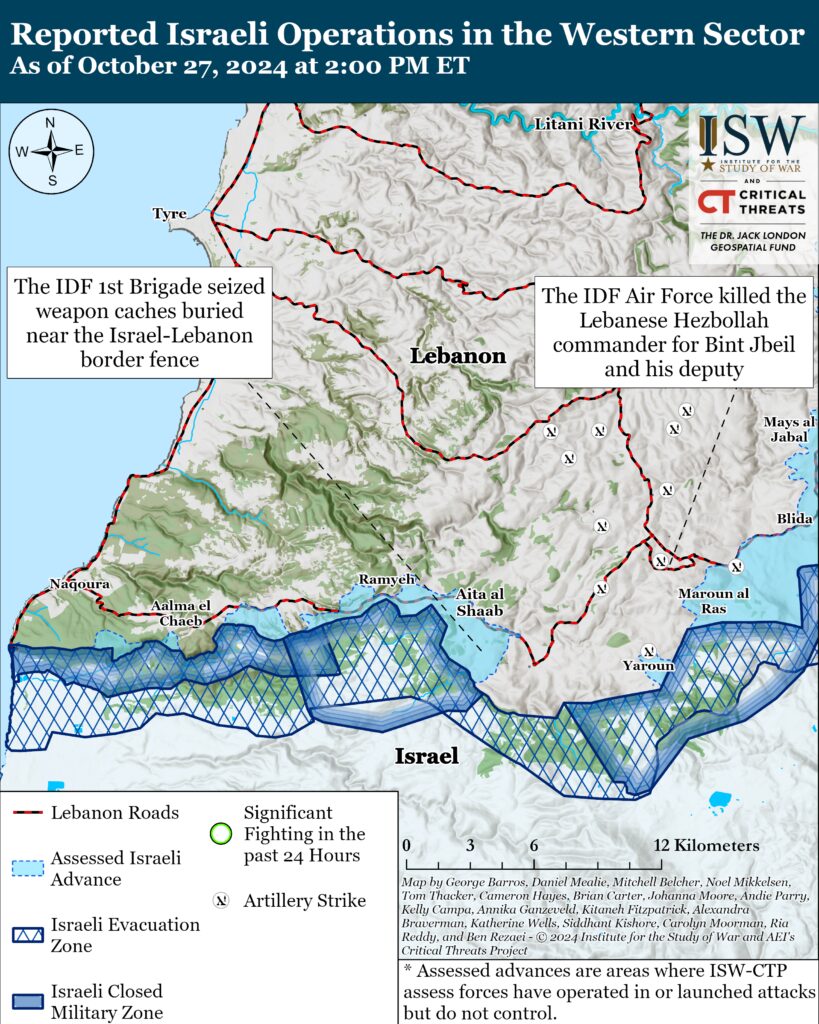
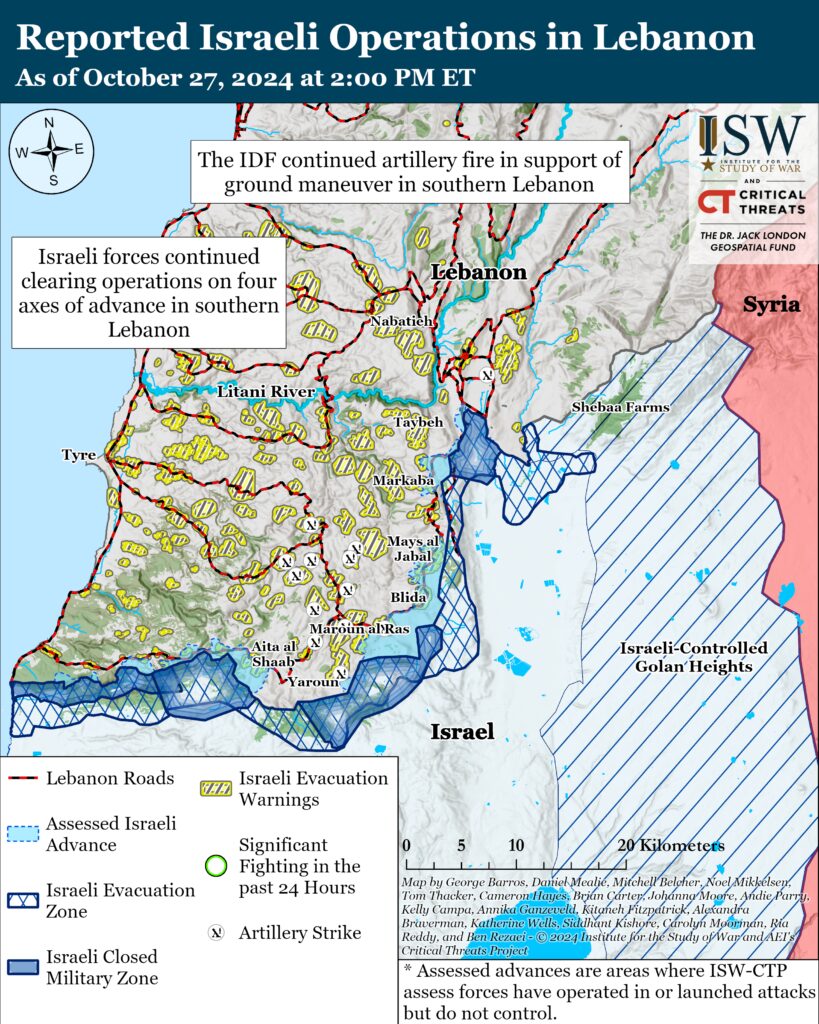
The IDF continued its air campaign to targeting Hezbollah capabilities and infrastructure on October 27. The IDF Air Force struck over 120 Hezbollah targets across Lebanon, including infrastructure used by Hezbollah’s drone unit in southern Lebanon.[57] The IDF Air Force struck multiple weapons production sites in southern Beirut.[58] The IDF issued warnings to residents of Burj al Barajneh and Hadath neighborhoods to evacuate at least 500 meters from Hezbollah infrastructure prior to attacking the area.[59]
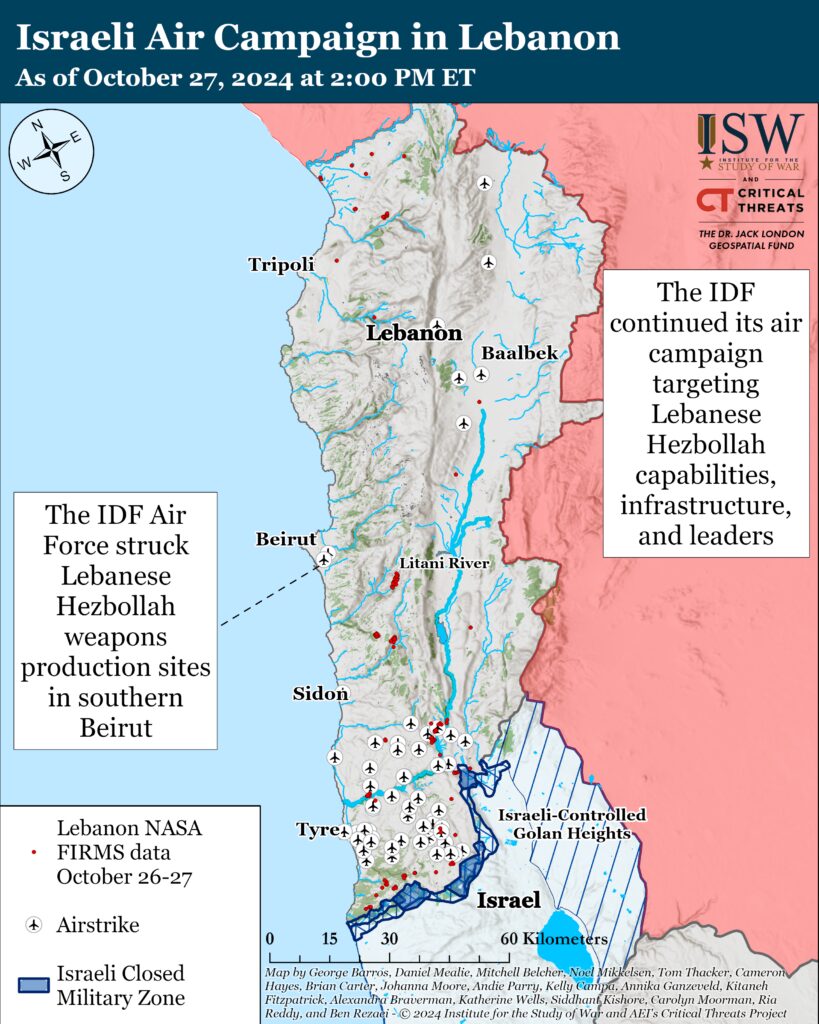
This map illustrates individual Israeli air strikes based on local Lebanese reporting. This map depicts strikes reported from 2:00pm ET on October 26 to 2:00pm ET on October 27. This map is not exhaustive. CTP-ISW cannot independently verify the locations of Israeli strikes.
The IDF Arabic-language spokesperson called on civilians to evacuate immediately from 14 towns and villages in southern Lebanon on October 27.[60] The spokesperson told residents that they should move north of the Awali River.[61] The IDF previously requested residents to evacuate from all but four of the towns.
Hezbollah has conducted at least 17 attacks into Israel since CTP-ISW’s last data cutoff on October 26.[62] A Hezbollah one-way attack drone struck and damaged a military industrial site east of Acre, northern Israel.[63] The company produces aviation components for both military and commercial contracts.[64] The attack drone injured two people.[65] An Israeli Army Radio correspondent reported that warning sirens did not sound in the correct location near the industrial site.[66] Hezbollah fired 75 rockets at another military industrial site east of Haifa.[67] Hezbollah attacked Israeli forces along the Israel-Lebanon border in nine separate incidents.[68] Hezbollah conducted five attacks targeting Israeli forces east of Hula, where Israeli forces are reportedly conducting clearing operations.[69]
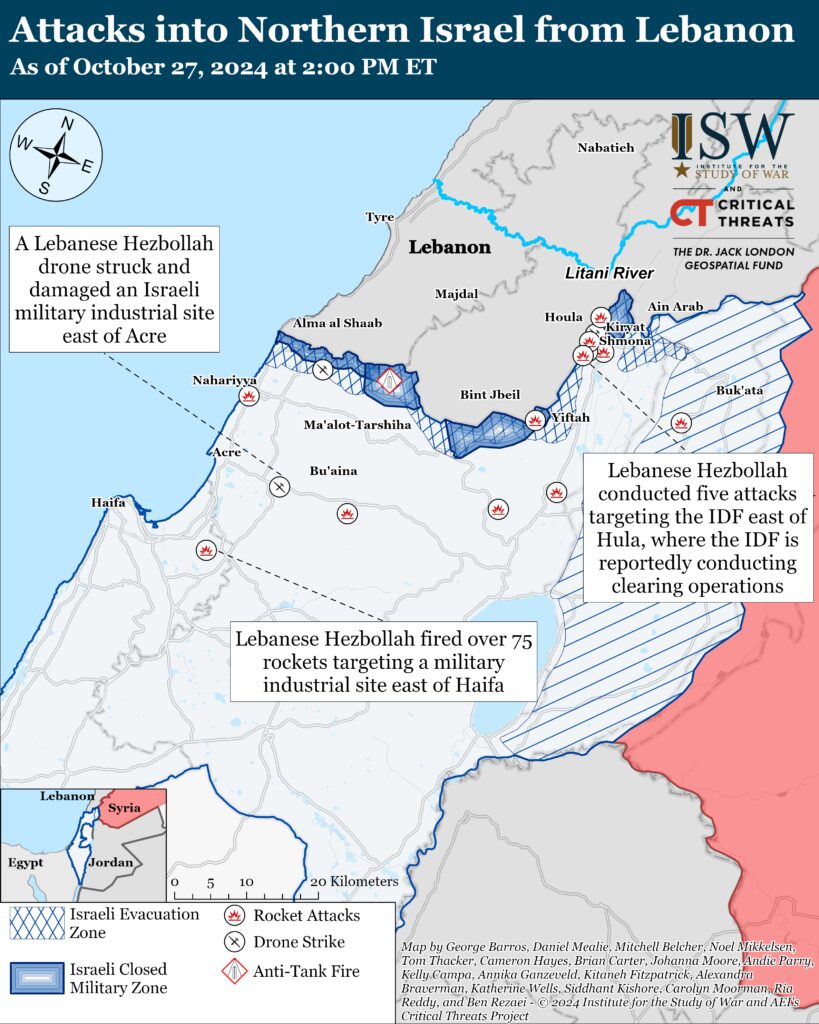
Iran and the Axis of Resistance
The Islamic Resistance in Iraq—a coalition of Iranian-backed Iraqi militias—has claimed three attacks targeting Israel since CTP-ISW’s last data cutoff on October 26.[70] The claims include the following:
Two drone attacks targeting unspecified “vital target[s]” in Golan Heights[71]
A drone attack targeting an unspecified “vital target” in Eilat[72] Eurasia Press & News
Eurasia Press & News
